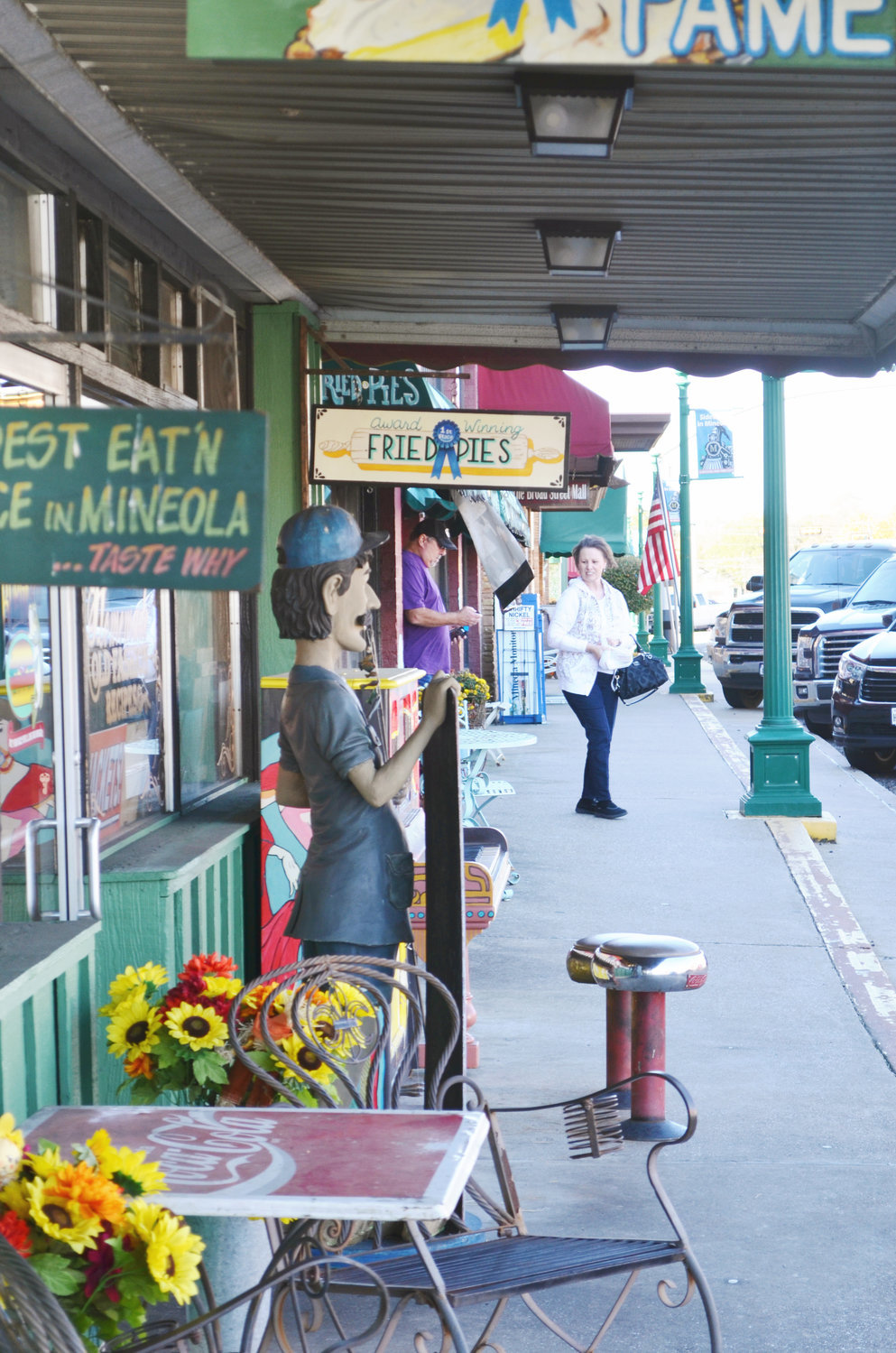Main St. program helps maintain a vital downtown
editor@woodcountynews.com
Downtown Mineola’s eclectic mix of vintage merchandise stores, service shops, galleries, restaurants and one-of-a-kind retail outlets is mostly housed in building stock that pre-dates the mid-20th …
This item is available in full to subscribers.
Attention subscribers
To continue reading, you will need to either log in to your subscriber account, or purchase a new subscription.
If you are a current print subscriber, you can set up a free website account and connect your subscription to it by clicking here.
If you are a digital subscriber with an active, online-only subscription then you already have an account here. Just reset your password if you've not yet logged in to your account on this new site.
Otherwise, click here to view your options for subscribing.
Please log in to continue |
Main St. program helps maintain a vital downtown
Downtown Mineola’s eclectic mix of vintage merchandise stores, service shops, galleries, restaurants and one-of-a-kind retail outlets is mostly housed in building stock that pre-dates the mid-20th century.
If not for timely maintenance, improvements and restorations, many a structure at Mineola’s commercial heart might well have succumbed to neglect and the elements long ago. Instead, a good number sport cheery façades and wide awnings, eye-catching signs and a welcome mat to customers. An enterprising spirit has been good to this place; so has Mineola’s Main Street program.
The city’s Main Street program launched in 1989 and originally comprised the area generally regarded as downtown. Through the years, the district has expanded and today takes in South Pacific to the city’s southern limit, a block north of U.S. 80 on Pacific to McDonald Street, east along U.S. 80 to the Mineola HealthCare Residence, and west to where Kilpatrick intersects with U.S. 80.
Since 1989, private reinvestment in the district has averaged $656,000 annually, and over the past 29 years, 164 new businesses have been established and 409 jobs created. During that same time, total combined public and private reinvestment stands at $32.18 million, according to a report submitted to the Mineola City Council.
Reinvestment dollars are put to work rehabbing and renovating existing structures, including improvements such as new roofs, windows and doors replacement, fencing, signage, plumbing and electrical, according to Doris Newman, the city’s Main Street Program director.
“The business owners have so many expenses – small businesses are operating on a shoestring.
It’s not a great deal of money that we’re able to give every individual (business), but it’s a little input instead of output,” Newman said.
That input is an indispensable resource for downtown businesses, said Donna Hanger, who’s owned Between Friends on Broad Street for 10 years
“The Main Street program is vital to Mineola,” Hanger said. “It has brought so many improvements down here since the time it started.” She noted that customers often remark about the positive changes they see in downtown Mineola. “I have customers all the time who will say, ‘Wow this looks really nice, they’ve done a lot of things.’”
Hanger knows firsthand the value the Main Street program. The doors to her building were original and in need of an upgrade. “They helped me get the doors redone. And then we decided to do the awnings and to paint and to put a new sign up, and they helped me with that. Frankly, we’ve had a lot of expenses this year that we weren’t expecting, and so (the help from Main Street) has made (the improvements) happen much faster than if we had had to do it all by ourselves.”
Mineola’s Main Street program has a budget of $177,000 per year. It receives assistance from the Meredith Foundation, and the city’s half-cent sales tax for economic development supports some Main Street functions. Various fundraisers and thousands of volunteer man-hours also provide valuable resources to the program.
An important tenet of the Main Street program is a belief that historic commercial properties and their preservation contributes to overall economic, social and cultural vitality of a community. The state’s Main Street Program falls under the Texas Historical Commission. In her role as Main Street director, Newman also functions as Mineola’s officer for Historical Preservation.
Because of the emphasis placed on preservation, businesses that qualify for Main Street grants must meet certain criteria.
“If they are going to do something that changes the exterior of the façade or doing major rehab to the building, there could be grant money if (the renovation) meets with our criteria for the historic nature of the building,” Newman said.
Mineola became the city in Texas to utilize the Main Street Program, and at least one correlation is evident, according to Newman. “For one thing, the occupancy of downtown is notable to the time before Main Street to after Main Street.” Today, the occupancy rate stands at 90 percent, according to Mercy Rushing, executive director of the Mineola Economic Development Corp.
That number bodes well for an economically viable downtown, which, according to Newman, plays a dominant role in defining a community.
A vibrant downtown “is vital to a community” and to keeping the community’s heart healthy, said stated. “People should try to imagine their town without a downtown.”
A healthy downtown, she added, provides people with “a sense of place – a place where people can go and enjoy a quality of life. And the beauty of Main Street is that morphs into economic viability.”







